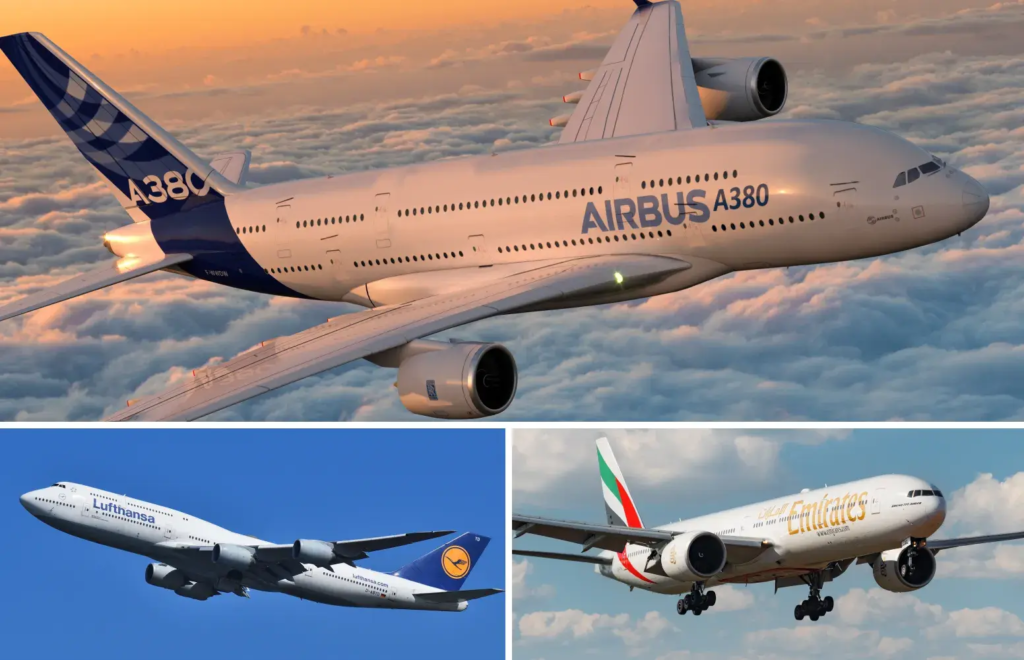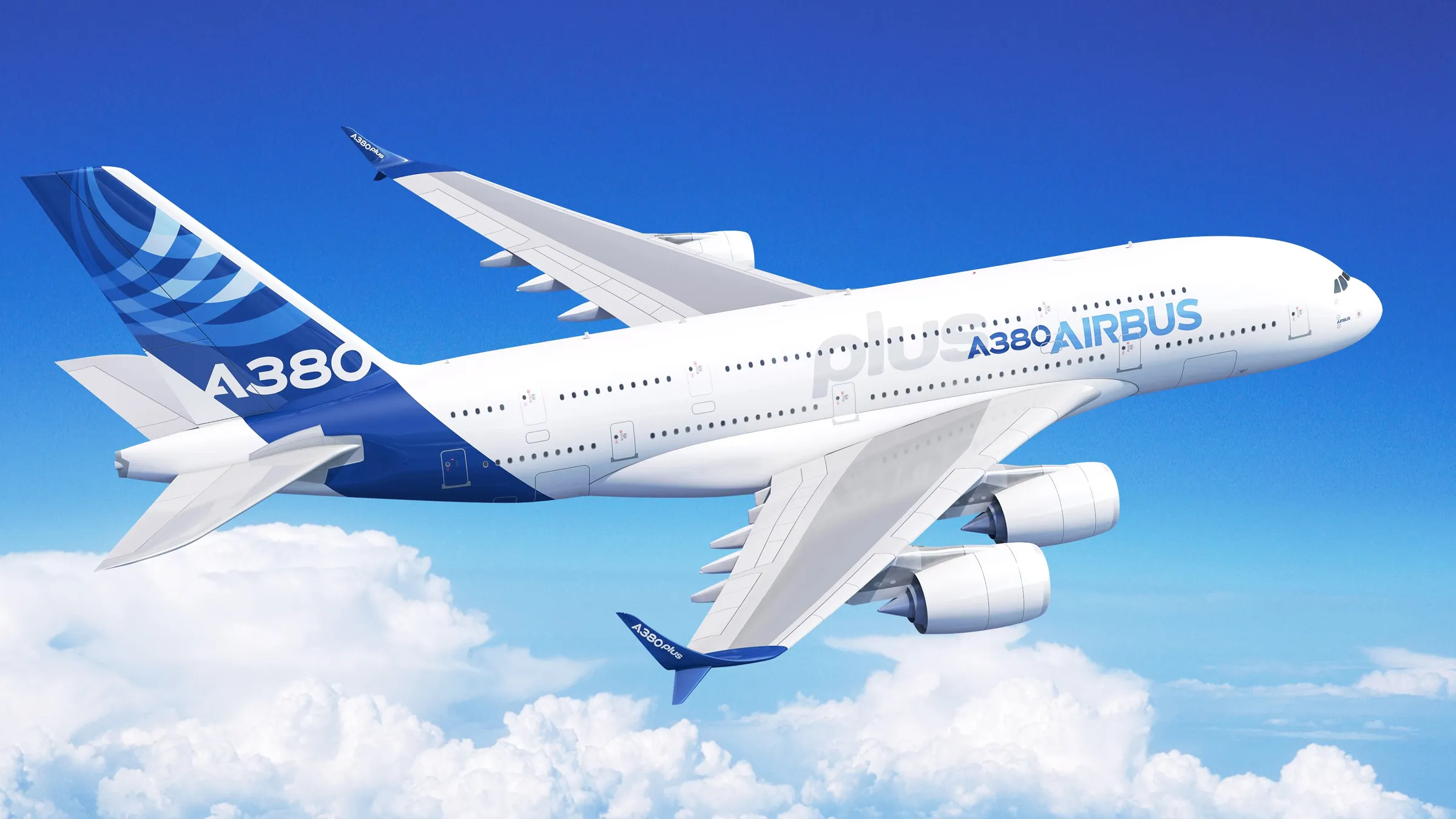Discover the features, capabilities, and impact of the Airbus A380 aircraft. Learn why this double-decker behemoth is a game-changer in the aviation industry.
Introduction
The Airbus A380 aircraft is an engineering marvel that has redefined the landscape of air travel since its first commercial flight in 2007. As the largest passenger airliner in the world, the A380 combines cutting-edge technology with unparalleled comfort, making it a favorite airline and travelers alike. In this comprehensive blog post, we will explore the various features and benefits of the Airbus A380, delve into its impact on the aviation industry, and highlight the reasons why this aircraft remains a favorite for long-haul flights. From its innovative design to its impressive performance capabilities, the A380 stands out as a symbol of modern aviation excellence.
The Evolution of the A380

Development and Design
The Airbus A380 was developed in response to increasing passenger demand and the need for more efficient long-haul travel. Here are some key milestones in its development:
Conception: The project began in the early 1990s, with Airbus aiming to create a larger aircraft capable of carrying more passengers over longer distances.
First Flight: The A380 made its maiden flight on April 27, 2005, and after rigorous testing, it received its certification in 2006.
Commercial Launch: The first commercial flight took place on October 25, 2007, operated by Singapore Airlines.
Specifications
The A380 is a true giant in the skies. Here are its key specifications:
Length: 72.7 meters (238 feet 7 inches)
Wingspan: 79.7 meters (261 feet 8 inches)
Height: 24.1 meters (79 feet 7 inches)
Maximum Takeoff Weight: 560,000 pounds (approximately 250,000 kg)
Passenger Capacity: Typically 555 in a three-class configuration, but can carry up to 800 passengers in an all-economy setup.
Innovative Design Features

Double-Deck Configuration
The A380’s most distinctive feature is its double-deck design, which allows for a significant increase in passenger capacity without sacrificing comfort. The aircraft’s two full-length passenger decks provide ample space for various cabin configurations.
Advanced Wing Design
The wings of the A380 are engineered to maximize aerodynamic efficiency. Key features include:
Winglets: These help reduce drag, improving fuel efficiency.
High Aspect Ratio: The wings have a high aspect ratio, enhancing lift and reducing fuel consumption during flight.
Spacious Cabin
The A380 offers a spacious and comfortable cabin environment. Some highlights include:
Wider Aisles: The aircraft’s design allows for wider aisles, making it easier for passengers to move around.
Larger Windows: Passengers can enjoy more natural light thanks to larger windows, contributing to a more pleasant flying experience.
Performance and Efficiency

Fuel Efficiency
Despite its size, the Airbus A380 is remarkably fuel-efficient for its capacity. Here’s how:
Engine Technology: The A380 is powered by either the Engine Alliance GP7200 or the Rolls-Royce Trent 900 engines, both designed to provide optimal performance while minimizing fuel consumption.
Reduced Carbon Emissions: The A380 emits about 75% less carbon dioxide per passenger compared to older aircraft, making it a more environmentally friendly option for airlines.
Range
The A380 boasts an impressive range of approximately 8,000 nautical miles (about 15,000 kilometers), allowing airlines to operate long-haul routes without the need for refueling stops. This capability makes the A380 ideal for international flights.
Noise Reduction
The A380 is engineered to be quieter than many of its predecessors, thanks to advanced noise-reduction technologies, including:
Quiet Engines: The engines are designed to minimize noise, both inside the cabin and during takeoff and landing.
Soundproofing Materials: The cabin features soundproofing materials that enhance passenger comfort by reducing ambient noise.
Passenger Experience
Comfort and Amenities
The A380 is designed with passenger comfort in mind. Some key features include:
Spacious Seating: Airlines can configure the A380 with varying seat layouts, ensuring ample space for passengers in all classes.
In-Flight Entertainment: Passengers enjoy a state-of-the-art entertainment system with larger screens, a wide selection of movies, TV shows, and music, and often Wi-Fi connectivity.
Mood Lighting: The A380’s cabin is equipped with mood lighting that can be adjusted to create a calming atmosphere, helping passengers adjust to time changes during long flights.
Class Configurations
The A380 can be configured in multiple class layouts, accommodating a wide range of passenger preferences:
First Class: Often includes luxurious suites, private cabins, and exclusive amenities.
Business Class: Features lie-flat seats, premium dining options, and enhanced privacy.
Economy Class: Offers spacious seating with a focus on passenger comfort, often configured in a 3-4-3 layout.
The A380’s Impact on the Aviation Industry
Changing Travel Dynamics
The introduction of the A380 has transformed long-haul travel dynamics by allowing airlines to transport more passengers on high-demand routes. This capability is particularly beneficial for busy international airports, reducing congestion and enabling more direct flights.
Economic Benefits
Airlines operating the A380 can benefit from lower operating costs per seat, making long-haul travel more economically viable. Additionally, the A380 has opened new markets and routes, promoting tourism and economic growth in various regions.
Competitor Response
The success of the A380 has prompted other manufacturers to invest in developing large aircraft. Competitors like Boeing have focused on creating their own models to cater to airlines seeking efficiency and passenger comfort.
Challenges and Future Outlook
Operational Challenges
While the A380 has many advantages, it also faces operational challenges, including:
Airport Compatibility: Not all airports are equipped to handle the A380, requiring modifications to existing infrastructure.
Fleet Management: Airlines must carefully consider fleet size and scheduling to maximize the benefits of operating the A380.
Market Trends
As the aviation industry evolves, there is a growing trend towards smaller, more efficient aircraft capable of serving point-to-point routes. This shift may impact the long-term demand for the A380, as airlines adapt to changing passenger preferences.
Future Developments
Despite the challenges, Airbus remains committed to supporting the A380 program. Innovations in fuel efficiency, passenger comfort, and technology will continue to shape the future of this iconic aircraft.
Conclusion
The Airbus A380 aircraft is a testament to the advancements in aviation technology and design. With its unparalleled size, innovative features, and commitment to passenger comfort, the A380 has redefined the long-haul flying experience. As airlines continue to navigate the challenges and opportunities presented by the aviation industry, the A380 remains a symbol of modern air travel. Whether you’re an aviation enthusiast or a frequent flyer, the A380 is sure to leave a lasting impression as it soars through the skies, connecting people and cultures around the world.










